Turbocharger Failure – By Ben Acosta
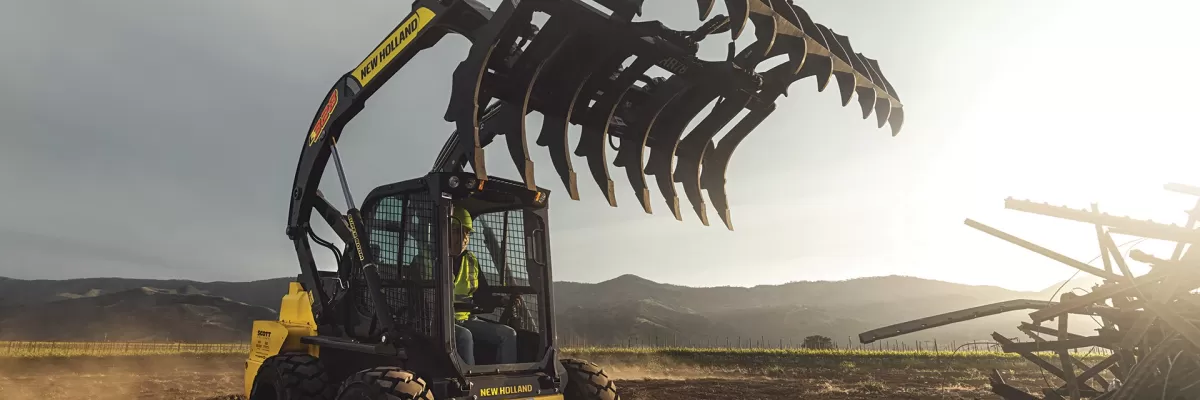
When it comes to turbochargers, a diesel application is likely the most demanding environment a turbo can be tasked with operating in. Constant load, extreme temperatures, extended maintenance intervals, and expected service lifespan are all part of the diesel turbocharger’s everyday experience. So it stands to reason that between the type of life they lead, along with the sheer number of turbo-diesel engines on the road, diesel turbochargers see more failures than their gasoline counterparts.
Mac Flynn, the turbocharger product manager at Diesel Forward a division of Alliant Power says “The beauty of turbochargers, is that they see everything going on in the engine.” We see turbochargers decreasing in size due to aerodynamic efficiencies increasing, it’s putting more and more load on the turbocharger and its rotating assembly and bearings. Turbos don’t just fail because of old age. We want you to be able to look at a failed or failing turbo, and figure out what the root cause is.”
Improper Turbo Lubrication
When you are spinning at speeds that can surpass 100,000 rpm, with the ridiculously tight clearances in modern turbos, the importance of proper lubrication of the rotating assembly can’t be overstated. “While a broad term, improper turbo lubrication is the most common cause of turbo failures that we see,” says Flynn. “It can be anything from feed line restrictions, oil dilution (both coolant and/or fuel in the oil), we’ve even seen improper oil weights being used.”
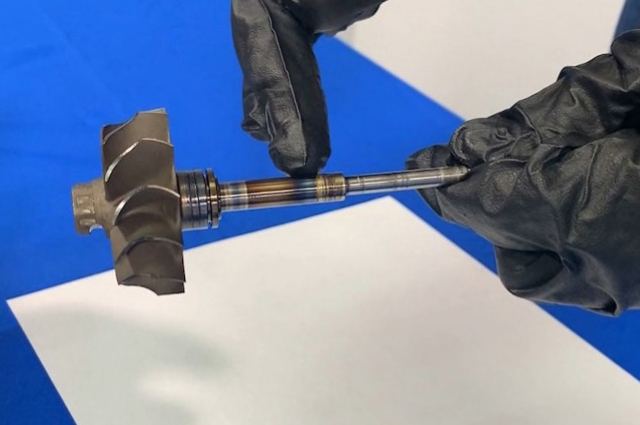
This shaft shows the signs of improper lubrication. However, this can stem from a wide range of root causes. Improper lubrication is the main cause of turbocharger failure, and being able to diagnose the root cause is important.
Additional causes of improper turbo lubrication can come from other sources completely unrelated to the turbocharging system, but affecting the turbo nonetheless. There can be a lack of proper oil pressure or oil volume being supplied to the turbo, which can come from a failing oil pump or bearing clearances opening up from wear,” says Flynn.
Damage can even be caused by oil level — if you run the engine dry of oil — as well as improper bearing priming procedures. “Unfortunately, we see [improperly primed new turbochargers] quite often. A new turbo coming out of the box, installed on the engine and no priming done before the engine starts up,” Flynn explains.
Foreign Object Damage (F.O.D.)
If you have ever worked around jet aircraft, you’re likely familiar with the term “F.O.D.” Foreign Object Damage occurs when anything other than air (or in some cases fuel or nitrous oxide) passes into or through the blades of a turbocharger.
“There is a surprisingly high amount of foreign object damage that occurs with turbochargers. It’s the easiest thing to spot and should be one of the easiest things to prevent,” says Flynn. “Any time foreign object damage occurs it will start and show sign on the inducer of the compressor and/or turbine wheel.”
You might be wondering, if this is a road-going diesel application with an air filter, not some race application with the impeller open to nature, how would foreign objects get into the tract. Flynn explains that an intake system and air filter aren’t Alcatraz, and things do get by. “It’s amazing how many times we’ll see someone throw on a turbocharger and not take the time to look at the intake tract to make sure it’s clear of debris. We’ve even seen where poor quality air filters can break or delaminate, go through the intake tract, and hit the impeller wheel.”
“On the turbine side, it’s a little harder to diagnose the source. We’ve seen anything from a bolt or a nut to exhaust valve seats, or exhaust valves themselves, injector tips, piston ring pieces, even broken up-pipe bellows,” Flynn says. “If you ever see F.O.D. on the turbine wheel, there’s a good chance something is coming apart in the motor, or something was left in the motor.”
While foreign object damage sounds like it would be a catastrophic failure, that’s not necessarily the case. Damage can be relatively minor and not immediately apparent in the engine’s performance, although it is still ultimately fatal to the engine.
“Not only does the damage to the blades on the wheel affect aerodynamic performance, but it can also affect balance. An imbalance will decrease [the turbocharger’s] longevity by placing major stresses on the bearings, and it can also increase noise from the turbo,” explains Flynn.
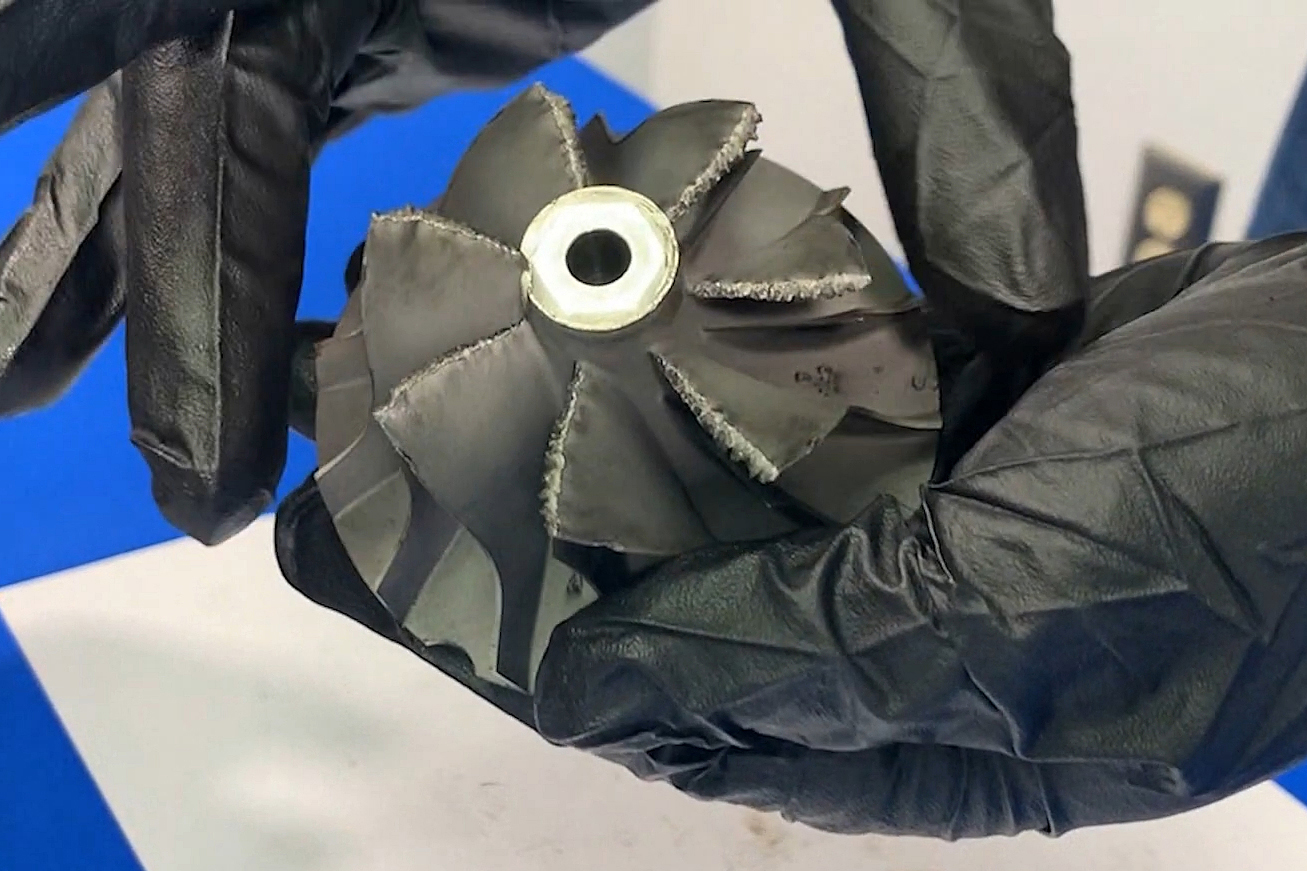
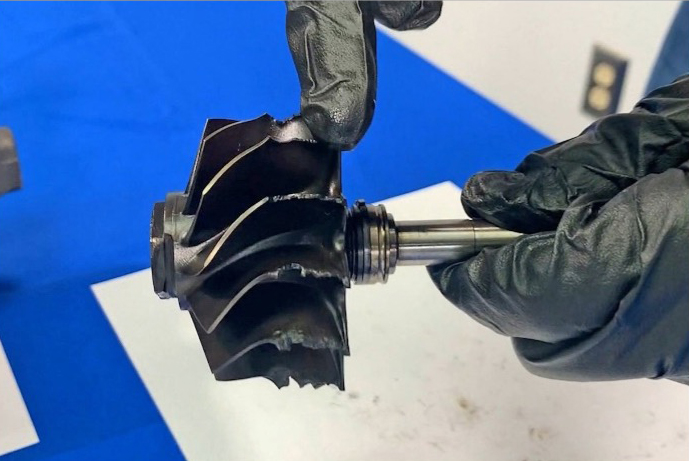
Foreign Object Damage seems pretty straightforward. However, there are some indicators you need to pay attention to. If it's something flowing through the turbocharger, it will always show on the wheel inducer first. Remember, the inducer is where the air first hits the blades, so it is in a different location on a compressor wheel (left) and a turbine wheel (right). FOD can range from minor damage to the leading edge of the blade(s) all the way to the catastrophic destruction of the wheel.
Emission Component Failure
The third cause attributed to the most common turbocharger failures in diesel engines is a result of an initial failure of an emissions component either upstream or downstream of the turbo. “With the EPA constantly tightening regulations, manufacturers are having to include emissions components to meet those regs,” explains Flynn.
"We’re seeing an increased number of turbochargers being pulled off the engine as failing, when it’s actually another component causing the issue, and in some cases causing the actual failure of the turbocharger.” One of the major issues seen is the diesel particulate filter (DPF) substrate breaking and blocking flow, creating excessive backpressure in the turbocharger.
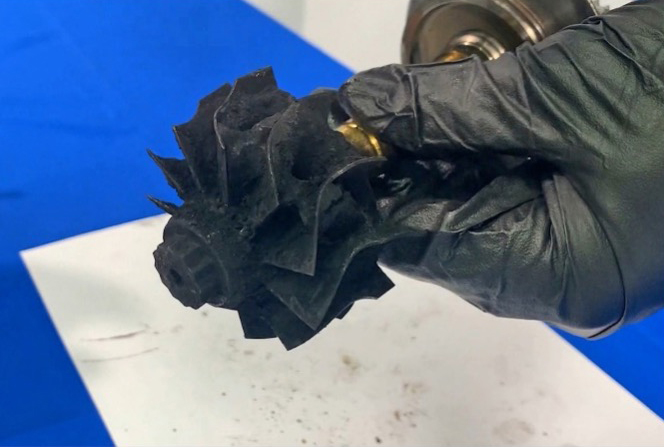
This is the result of a broken or clogged diesel particulate filter. Not only does the restriction in the exhaust increase backpressure, but the buildup on the turbine wheel also kills the blades’ ability to do work, and can throw the whole assembly out of balance, causing bearing failure
“In addition to creating inefficiencies in the exhaust, reversion can push those gasses back to the rotor group and actually slow down the wheel speed. That in turn puts a ton of heat back into the system which can lead to all sorts of parts breakage on the turbocharger,” says Flynn.
“Additionally, you can have things like failed EGT coolers, where they leak fluid into the turbine housing, causing rusting and pitting. If you see any kind of water in your turbine housing, you have an issue other than the turbocharger. It can cause failures in the turbocharger, but the turbocharger failure is a symptom of a larger root cause.”
